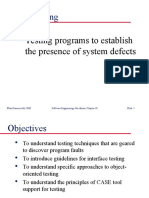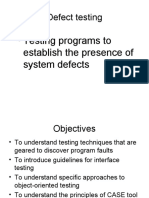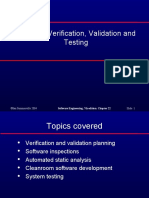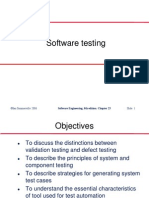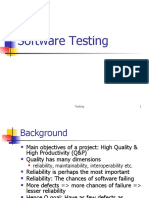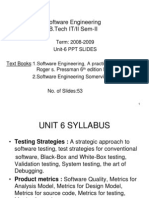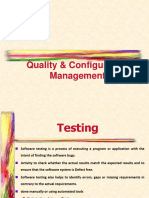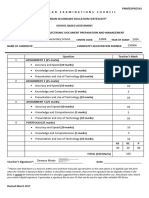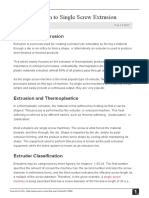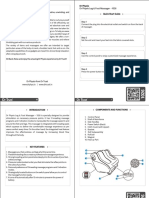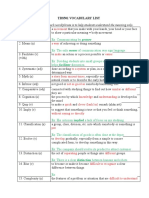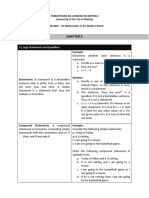0% found this document useful (0 votes)
21 views56 pagesDefect Testing
The document discusses defect testing in software engineering, focusing on techniques to identify program faults and the importance of integration and object-oriented testing. It outlines the testing process, including component and integration testing, and emphasizes the need for effective test case design and data preparation. Additionally, it covers various testing methodologies such as black-box testing, equivalence partitioning, and structural testing to ensure comprehensive coverage of program functionalities.
Uploaded by
aamakureyaCopyright
© © All Rights Reserved
We take content rights seriously. If you suspect this is your content, claim it here.
Available Formats
Download as PPT, PDF, TXT or read online on Scribd
0% found this document useful (0 votes)
21 views56 pagesDefect Testing
The document discusses defect testing in software engineering, focusing on techniques to identify program faults and the importance of integration and object-oriented testing. It outlines the testing process, including component and integration testing, and emphasizes the need for effective test case design and data preparation. Additionally, it covers various testing methodologies such as black-box testing, equivalence partitioning, and structural testing to ensure comprehensive coverage of program functionalities.
Uploaded by
aamakureyaCopyright
© © All Rights Reserved
We take content rights seriously. If you suspect this is your content, claim it here.
Available Formats
Download as PPT, PDF, TXT or read online on Scribd
/ 56
